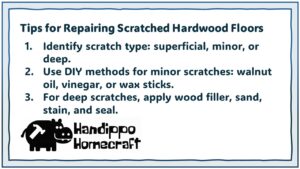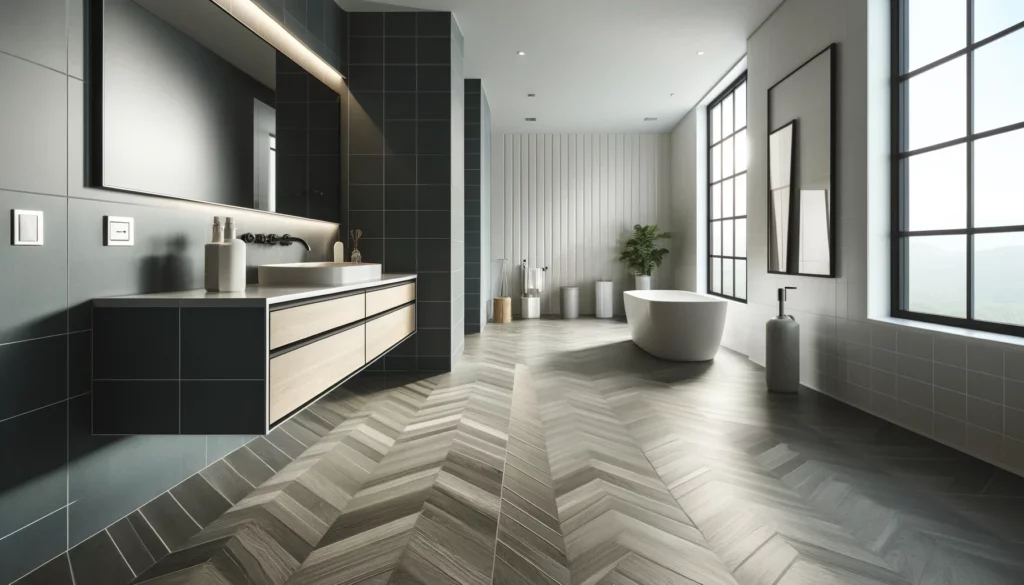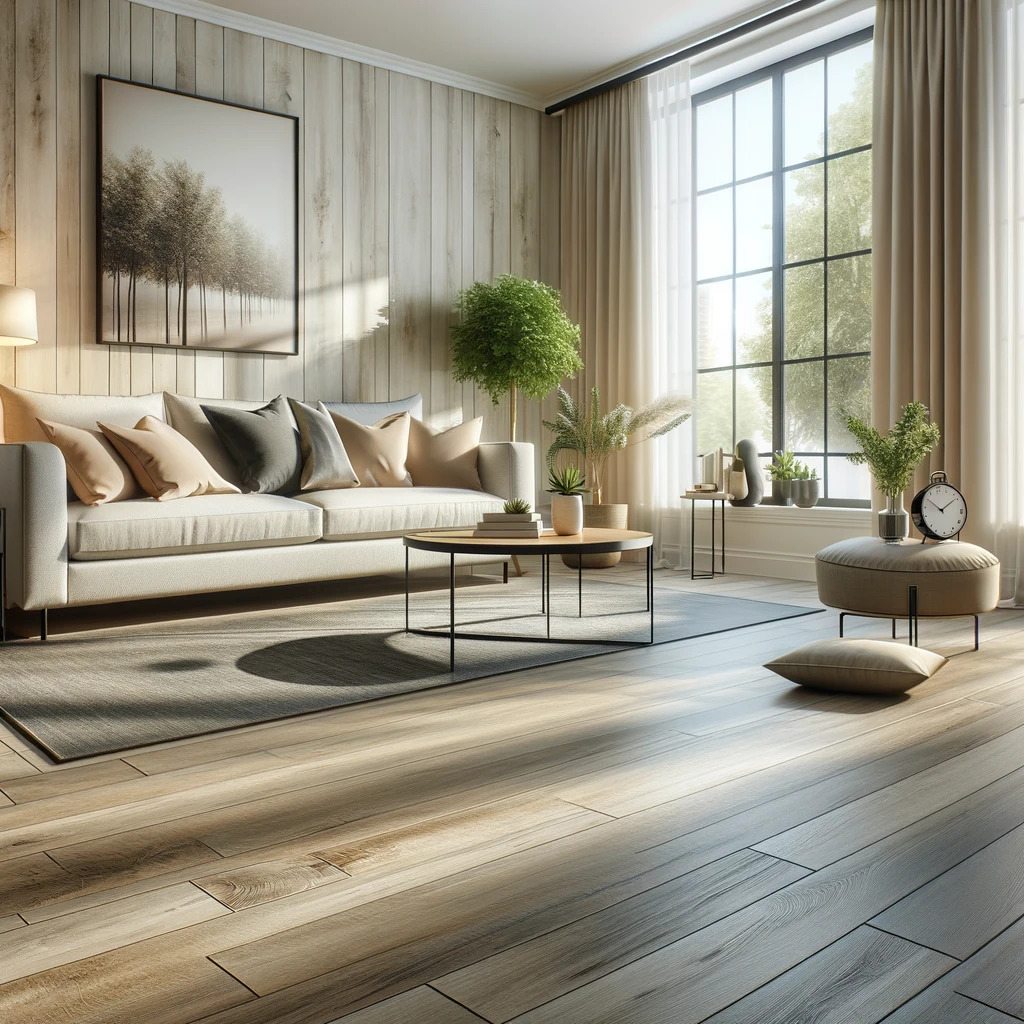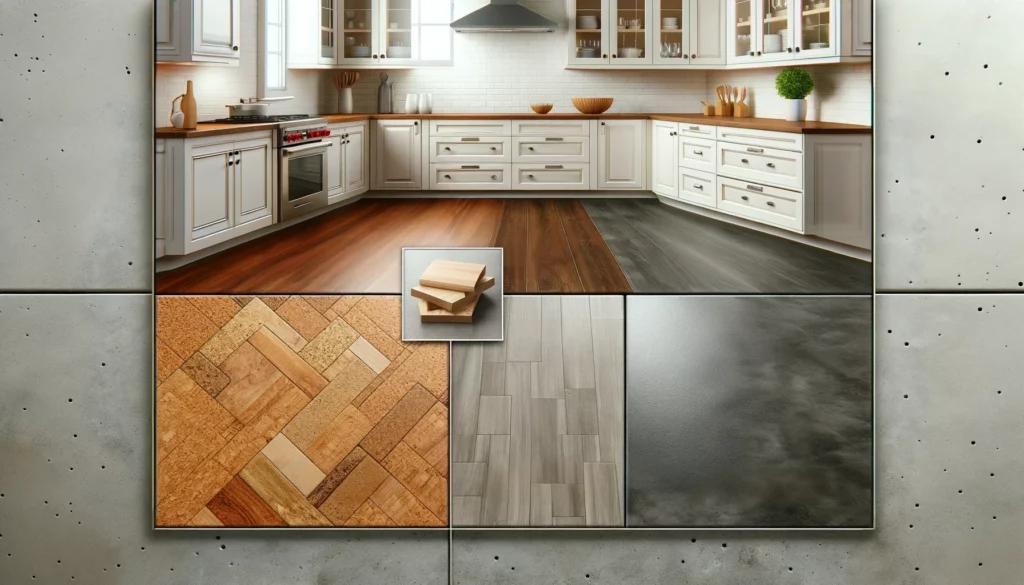How to Repair Scratched Hardwood Floors: Get Your Floors Looking Like New Again
Consider the following: You’ve just entered your fantasy house for the first time ever and you are taking a look at the polished wooden floors in amazement. It gives a very warm look and feeling and adds a touch of class and sophistication to any room. But then, disaster strikes. Whether it is a furniture leg that gets misaligned and gouges the surface, a playful pet scratching its claws on a film of finish, or the wear and strain of constant footfall creating the fine lines within the sheen that bust and once and still-perfect polish, the floor is bound to show signs of wear at some point. Even though your once admired floors turn into a pain.
Hardwood floors are a great investment for your home that add beauty and value, and never go out of style. Their natural warmth and timeless charm can enhance the vibe of the space shiningly done, plus in one go. The downside is that they are easily damaged and scratched. From deep gauges expanding from the motion of chairs to a thin line after another line that eventually turning into a series of absurdities, an unfortunate appearance of scratches can be the most damming look of your hardwood floor.
Fortunately, there is an effective solution to fight off these gross imperfections. In this complete guide, we look at everything from at-home fixes for minor scratches to professional treatments for more serious damage. In addition, you are going to learn the most important preventative steps to take to keep your hardwood floors in the best condition and preserve them for the time to come.
This blog is meant for homeowners who are in search of the most effective methods to fix their scratched hardwood floors. We have assembled some of the best tips and tricks out there today to help make cleaning wood floors easier and more efficient for you, so you are on the right place to learn how to remove hardwood floor scratches.
Scratches in your hardwood floor practicality are categorized based on the severity
Remember, no repairs can be made until you know WHAT you are repairing! The severity of damage will differ between each scratch and the proper repair will be determined by the depth and coverage of the scratch. We broke down some of the common types of scratches that you may come across:
- Surface Scratches: These are the smallest scratches, as these just effect the gloss that is on the surface of the floor. These are minor and normally present as inconspicuous lines or scuffs from minor abrasion or dirt.
- Fine or minor Scratches: These scratches go through the finish and into the wood and have a slightly larger mark. They are usually from dragging your furniture, sharp objects or pet claws.
- Deep Scratches: The most severe, these penetrate through the finish and the wood’s surface, leading to a visible gouge or indentation. Heavy scratches are usually due to heavy objects, sharp edges, or industrial use.
Identifying what kind of floor finish you have also helps you choose the appropriate repair method. Finishes with different levels of protection and need different repair methods. The following are the most popular finishes you would come across:
- Wax: Wax finishes are natural and protect your countertop, though they are not as resilient as polyurethane.
- Urethane: One of the most sought-after finishes, urethane provides great protection against scratches and water.
- Varnish: Varnish finishes add a shiny gloss layer as a protective coat however it my scratch depending on the type of varnish selected.
With the information on how you can grade a scratch and what type of finish you have, you have the tools to choose the right repair process and successfully refinish your original hardwood floors.

For detailed information about home flooring, don’t miss our Flooring Face-Off: What is the Most Popular Flooring in 2024
A Simple DIY Scratch Repair for Minor Scratches on Hardwood Floors
Depending on which level the scratches are on, minor scratches that do not run deep into the clear coat can usually be easily fixed using a DIY approach. These remedies have been tried and tested for combatting these annoying light and superficial scratches:
- Sunflower or Coconut Oil: The natural oils in sunflower and coconut can penetrate the wood, delivering the damage and scratches completely. Just rub either a walnut half or a bit of coconut oil into the scratch and let it sit for a few minutes. Gently buff the area with a soft cloth to remove any remaining olive oil and blend the area. This is a great option for lighter-colored wood floors.
- Apple Cider Vinegar and Olive Oil: This natural remedy is an easy way to minimize the look of minor scratches. In a small bowl, mix together apple cider vinegar and olive oil the same amount of both Use a clean towel to apply the mixture to the scratch, let it sit for 5–10 minutes, and then wipe it off. The vinegar will clean the surface and then the oil will moisture the surface and at the same time will fill the same scratch on wood.
- Magic Eraser: The Magic Eraser is another common household item that works very well on scratching on surfaces and scuff on hardwood floors. But be careful when using it, especially on stained floors. Magic Erasers can be abrasive, which means they can strip some of the finish off of your floor and alter the color. Always test the Magic Eraser on an unseen part of the daring absolute before you use on visible a scratch.
- Wax Sticks: Wax sticks work well for there glossy floor to fill in small scratches. They come in different colors so they match anything else hardwood in your home. The Pockey Stick is rubbed over the scratch edge pressed forcefully to ensure that the groove becomes filled. Next, buff the area with a clean, dry cloth to meld the wax to the existing surface.
- Quick Fix For Small Dents With Wood Stain Markers Wood Stain Markers: Wood stain markers can do wonders in terms of helping you finish the small scratches and blend them into the surrounding wood. Select a pen color that is as close to the color of your floor as you can. Type of pen used: markerFill in the groove of the scratch, gently using light strokes. If there looks like any extra after this, simply wipe off the residue with a dry, clean rag. This process is effective for even completed as well s incomplete hardwood floors.
Using the DIY ideas below can help you deal with smaller scratches easier and deal with them faster, rather than relying on a pro for help. Ensure to test whatever other remedy you try in a hidden place of the floor prior to putting it to a scratch you can notice.
How to Fix Deep Hardwood Floor Scratches
Deep scratch that runs deep into the finish and into the surface of the wood, will require a more detailed repair process. Although DIY play can generally help in the case of a small scratch, in the case of deep scratches, there is still a need to take a step further to restore the integrity of the floor. How To Fix More Severe Imperfections:
- Wood Filler: Wood or wood-based filers are hugely versatile, providing the perfect fill in for deep scratches and gouges. Available in many forms, one part formula such as wood filler putty, epoxy filler, paste wood filler. The trick is to find a filler that closely matches the color and texture of your hardwood.
- Application: Use a putty knife to apply the wood filler into the scratch and press it down to make sure it fills up the scratch completely.
- Drying: When the wood filler is set properly, leave it to dry completely depending on what is recommended by the manufacturer.
- Sanding: sanding is a must to make it a perfect mend This allows to flatten the filler while mixing it with the surrounding wood. Opt for fine-grit sandpaper and sand along the wood grain to eliminate more scratches. Make sure you do not sand the wood too deeply which might cause damage to the surrounding wood.
- Wood Stain: after filling the hole, we sanded it before applying wood stain to the hole and surrounding area to try to match to the grain of the surrounding wood. Select a stain that works with the finish on your floor. Use a clean cloth to rub the stain onto the wood as directed by the manufacturer.
- Polyurethane Finish: Add polyurethane finish to the area to prevent the damage from spreading. To select the right option, choose a polyurethane finish that is the closest match to the finish of your existing hardwood floor, if possible. Use thin coats and let them dry completely between layers.
- ProGrade Wood Filler: If you have deeper scratches, try a pro-grade filler that is designed to be used with flooring. These fillers are usually designed to resemble hardwood floors when it comes to color and texture, which makes them perfect for blending without even noticing.
Deep scratches may seem like an impossible task to fix, but using the correct tools and techniques, you can make a major difference in the appearance of your hardwood floors and leave them looking like new again.
How to Protect Hardwood Floors from Scratches
Removing scratches can be a very time-consuming and tedious task. The only surefire way is to mask your hardwood floors and avoid scratches in the first place. Suggestions for measures you can take:
- No-Shoe Policy: Instead of having shoes on in your house, a no-shoe policy will minimize the risk of scratches from dirt, grit, and other substances people track in from the outdoors. Create a space near the entrance for others to take off their shoes.
- Pads on furniture: Always put pads on the bottom of the legs of all furniture, especially furniture that is being constantly sliding around. These pads distribute the weight of the furniture and prevent it scratching the floor. You will find felt, rubber, or plastic made furniture pads.
- Dog Nail Clipping: Trim your dog’s nails on a regular basis to minimize the scraping from their nails. As such, long, sharp nails can scratch the hardwood floor within moments of entering the room.
- Area Rugs and Mats: Protect your hardwood by putting area rugs and mats in high-traffic areas to reduce the damage caused by foot traffic. Durable Sit on rugs and pads that are designed to hold the weight of furniture and withstand foot traffic, respectively.
- Walk-Off Mats: Place walk-off mats at all entryways to avoid entry of dirt and debris from shoes. They protect your hardwood floors from people tracking dirt in from the driveway and scratching your floor.
- Regular Maintenance: Regular cleaning can prevent scratches. Keep a dustpan and brush (or vacuum) handily in the laundry and sweep or vacuum your floors often. And if left where they are, the particles can act like sandpaper, slowly scouring the finish.
- Dust Mops: For lighter duty, dust mops can remove surface dust and debris calmly. Sweep it regularly — with a dust mop of course with soft bristles so as not to scratch the finish.
- Vacuuming: Dusting off the Floors: If you clean your floors regularly, a dust mop will do the trick fine but dirt and grit will gather up in the kitchen with so much traffic, no matter how much your wipe away. Use a vacuum with a brush attachment built for your hardwood floors. Do not use a vacuum with a beater bar as this will damage the finish.
By taking these preventative measures, you can really minimize scratches and have your hardwood floors looking great for many years to come.
When to Hire a Pro for Hardwood Floor Scratch Repair
Most scratches can be fixed on your own, thanks to the many home repair kits available, a lot of the time the sooner the scratch is addresses the more likely you are to fix it easily and effectively. Professional Help is Recommended in These Situations
- Extensive Demage: If your hardwood floors have suffered extensive damage, like multiple deep scratches, gouges or water damage caps combined – it’s probably worth calling in a pro to repair them. Professional repair services will be able to address these issues with ease and specialized tools, restoring the floors to their original beauty.
- Refinishing: If there are deep scratches that are a little too widespread to be hiding by itself, choose professional floor refinishing. Refinishing – This entails sanding your floor to get rid of the top layer of finish and imperfections before adding to a new coat of finish. A complete process can recover the ultimate beauty of your hardwood flooring as the new one.
- Sanding: This type of process requires the use of heavy duty sanding equipment to get the job done right, sanding down a glazed hardwood floor is not a job that is suited for anyone really. Expert refinishers can properly sand hardwood floors to a level that floors look smooth and level after they are resealed. It also manages the dust and mess associated with sanding, so it is a cleaner, less invasive process for homeowners.
- Stain and Seal: You can also paint your floors to any color of your choice and have a professional refinisher seal your by sanding them down and than applying a urethane finish. With their immense understanding of stains and finishes, the final product that is produced with your home in consideration will not only be pristine but will also blend in with the décor and style.
If you are not completely convinced or have second thoughts about the best way to correct your air conditioning problem, gain assistance from a qualified and expert Natural Air Conditioning ® installation technician. They can provide guidance specific to your situation on how to proceed and help you bring back that natural charm to your hardwood floors.
Hardwood Floor Scratch Repair: Frequently Asked Questions
Can I repair scratches on my hardwood floors myself?
Yes, it is possible for you to repair your hardwood floor scratches by yourself. A number of DIY solutions including a bit of walnut or coconut oil, apple cider vinegar and olive oil, or a little bit of work with a Magic Eraser can lessen the appearance of superficial and minor scratches.
What wood filler to use for large scratches?
The best type of wood filler for deep scratches depends on the severity of the damage, as well as the type of wood you have, determines what you will use To fill deep scratches in some cases, color matching putty or wax sticks are all you need to use,Try to find fillers that are specifically designed for the color of wood you have so you have the best chance of a seamless repair For small to medium-sized gouges, any wood putty, or paste wood filler is fine. Epoxy filler is extra strong and more durable so it should be selected especially if the damage is severe. Make sure that when you install a filler it is the closest shade and texture to the wood that you have installed.
When should I call a professional to repair scratched hardwood floors?
If you have major damage, with many deep scratches, gouges, or water damage, it will be in your best interest to contact a professional. Their experience and use of advanced technology aid with intricate repairs preserving the look of your floors. After all, if you’re not certain about the best approach for your particular circumstances, it’s never a bad idea to consult with a pro for an evaluation.






